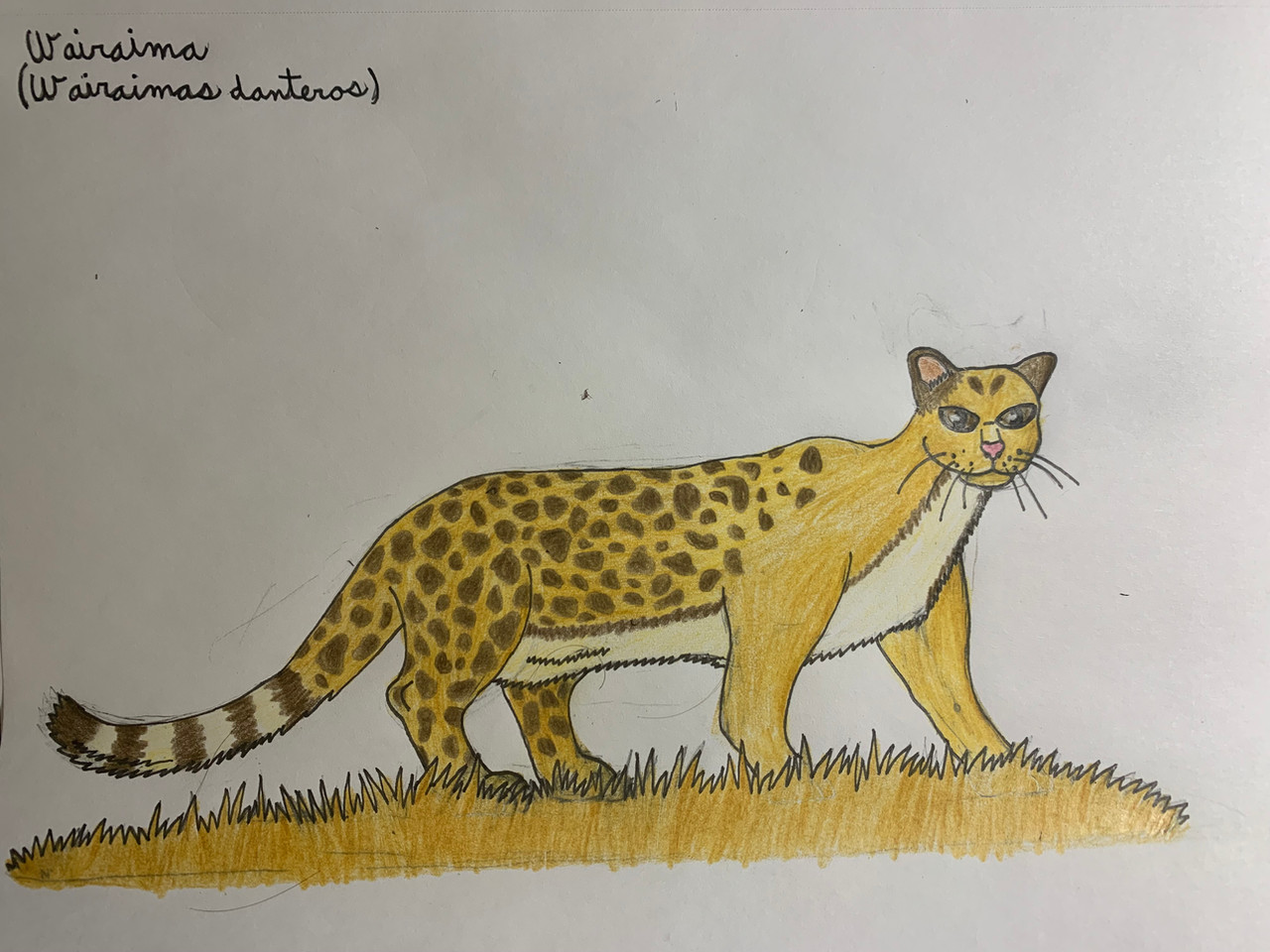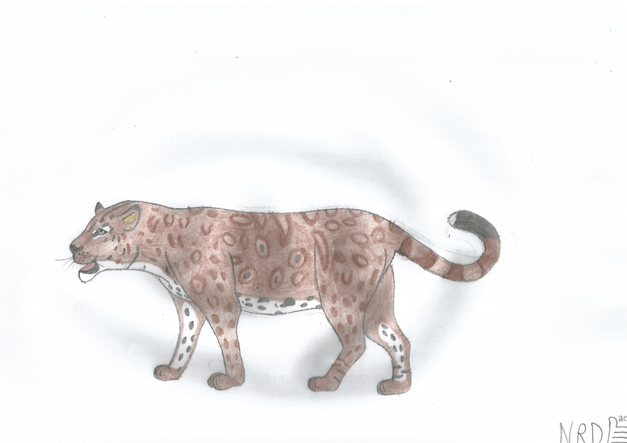HOME | DD
 ScreenSamurai — Wairaima
ScreenSamurai — Wairaima

#cat #feline #grassland #leopard #mountains #pampas #predator #rainforest #tropical #wairaima #futureevolution #speculativeevolution #speculativebiology #speculativezoology
Published: 2022-01-16 06:04:46 +0000 UTC; Views: 4831; Favourites: 61; Downloads: 2
Redirect to original
Description
Common Name: WairaimaScientific Name: Wairaimas danteros
Length: 2.1 to 2.4 meters
Weight: 30 to 105 kilometers
Diet: Marazelles , primates, ground birds, and reptiles
Distribution: The open grasslands and wooded areas of the Great Pampas, the low altitude forests of the Lost Peaks, and the forest floor of the Enchente Rainforest
Lifespan: 14 to 18 years
Description: Felines suffered a massive loss during the Holocene due to habitat loss, hunting, and climate change. Humans caused most of these effects due to their need for natural resources. The most affected by these environments were the members of the Panthera genus. This genus included lions, tigers, leopards, and jaguars. For instance, humans hunted some populations of tigers to extinction due to them endangering their livestock. Lions went extinct due to human habitation of the African savanna. Also, many of the large herbivores vanished due to poaching and habitat loss. Humans did not only affect panthers but the smaller cats too. For example, the Iberian lynx, a small cat species, went extinct due to habitat loss and road accidents. However, small cats faired better than their panther relatives. The Geoffroy’s cat managed to survive the Holocene extinction event due to it eating small animals. Over millions of years, these cats grew to be about the size of pumas and leopards. The most common species in the Novicene is the wairaima.
The wairaima is a species of cat that inhabits the grassland and forest biomes of South America. It gets its name from a cryptid of the same name. These cats stuck to the conservative body plan of a feline. Like most grassland-dwelling felines, they have an array of spots on their fur. However, they only have these dots at the back of the body. These spots allow them to break up their silhouette in the tall grasses of the pampas. This adaptation allows them to sneak up and ambush their prey. The location of a population causes the fur to change to match the climate. Wairaimas that live in the cold Lost Peaks evolved thick hair. The wairaimas of the grasslands and tropical forests have shorter hair to deal with those warmer climates. These cats are also slender enough to fit their heads into spacious burrows. This adaptation usually becomes important when hunting armadillos and burrowing rodents.
These cats are solitary creatures, patrolling their territories for intruders. Females will occasionally stay with their cubs past sexual maturity, but this is still rare. If two wairaimas met in the wild, they hiss and yell at each other. This behavior is a form of intimidation that tries to get the other cat to leave the area. When these strategies don’t work, both cats will fight. These fights cause serious injury most of the time, but they will never result in death. Other than randomly running into each other, the only time wairaimas meet each other is during the mating season. Even then, these interactions may turn violent. All in all, it is an intriguing creature despite its similarities to other cat species.
This is a redesign of Pampas Striped Pantera . Thanks to CabralZ for giving the idea for the redesign.
Related content
Comments: 6

👍: 1 ⏩: 0

👍: 1 ⏩: 1

👍: 1 ⏩: 0

👍: 1 ⏩: 1

👍: 1 ⏩: 0

👍: 1 ⏩: 0























